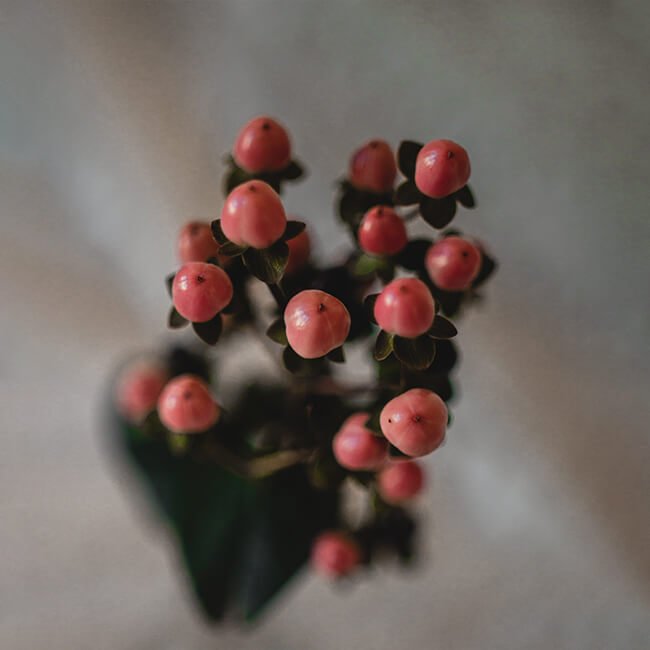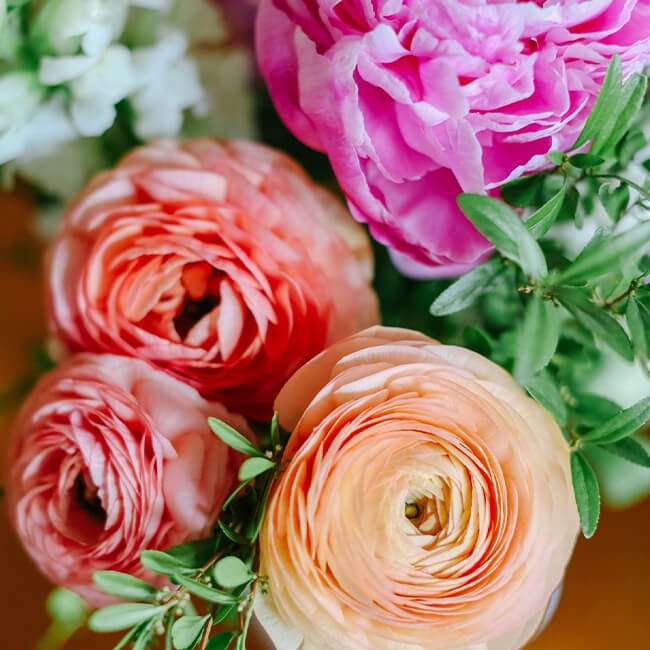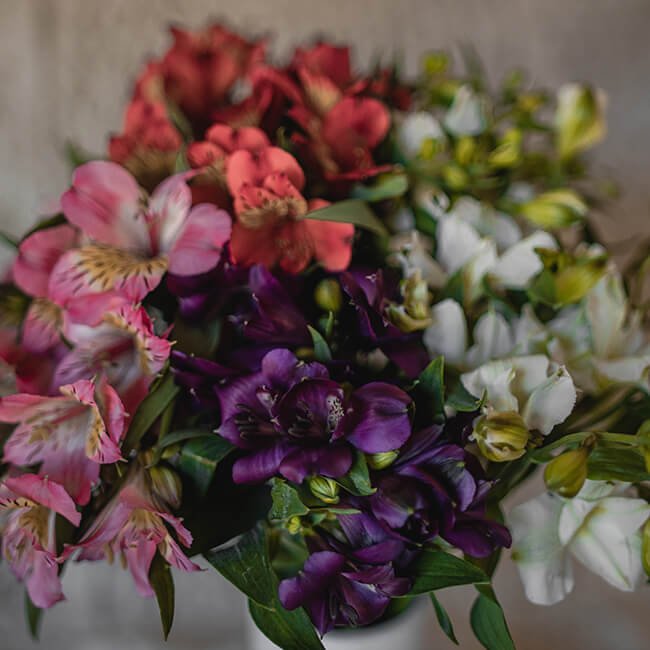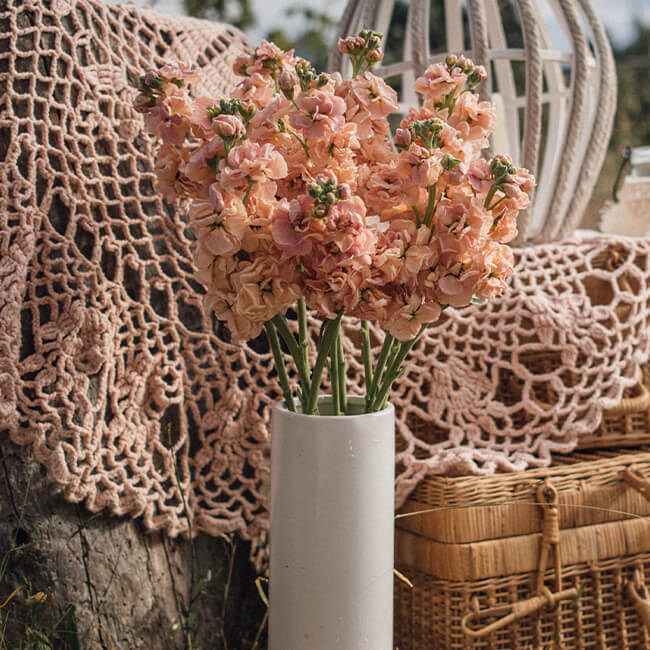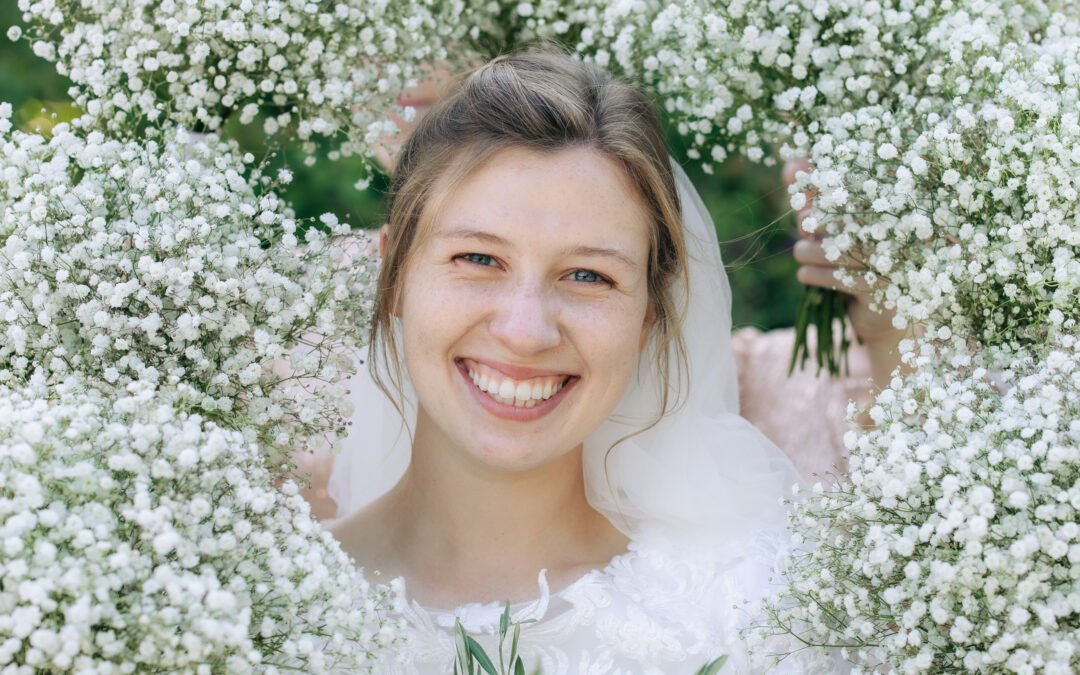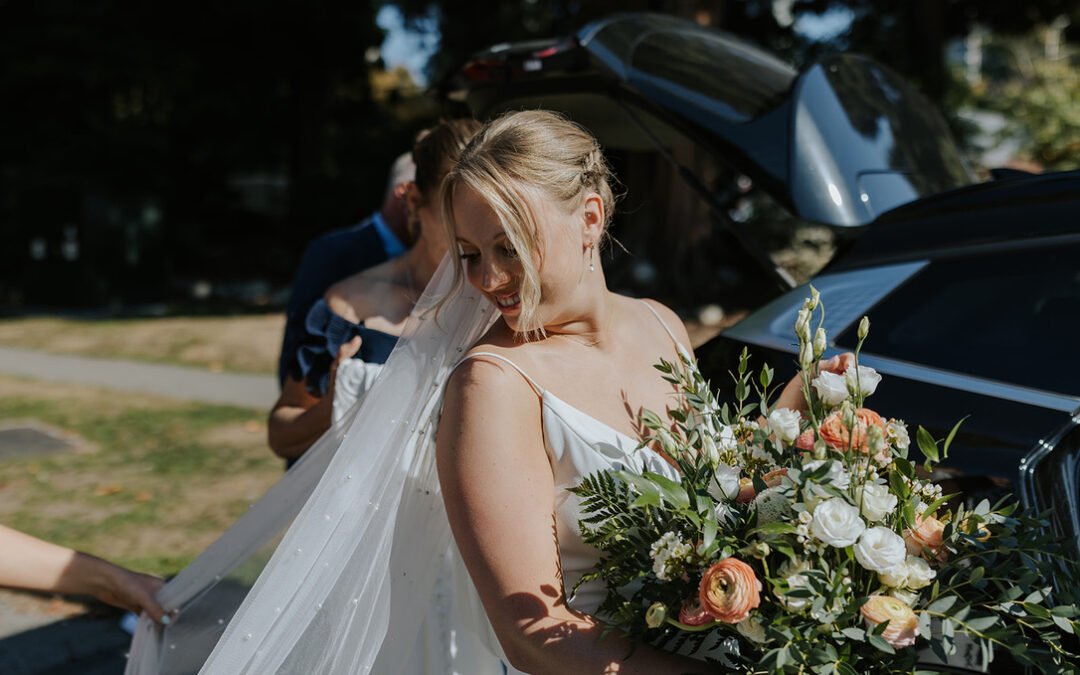The Five Categories of Flowers in Floral Design
Did you know that all florals can be divided into five groups? The five flower design classifications are:
- Big Flowers (e.g. disbud/carnation)
- Bougee (e.g. cosmos/scabiosa/ranunculus)
- Line (e.g. veronica/snapdragon)
- Texture (e.g. eryngium/astrantia/hypericum).
- Filler (e.g. babies breath/alstromeria)
Scroll down to learn when and why to use each type in your DIY bouquet! Of course, these aren’t hard and fast rules… after all, flower arranging is an art!
Greenery
- Greenery supports and frames the entire bouquet.
- You’ll want to include a fair amount of greenery (between 1/3 to 1/4 of your bouquet composition) to make sure your arrangement has lots of foundational support. If you’re making a large-scale arrangement (i.e. an arch), greenery is essential for structure, and then your blooms will just “nestle” between your bed of greenery.
- We generally like to use two different types of greenery in our bouquets for visual interest and texture. The photo above shows silver dollar eucalyptus and baby blue eucalyptus
Texture Flowers
- Texture flowers are meant to give depth and visual interest. With a petally focused bouquet (with lots of flowers like roses, carnations, and ranunculus)… the flowers can start to all blend together, so that’s where you’ll want to add in some texture to break up the clumps of petals and create visual interest!
- Some examples of texture flowers include hypericum, eryngium, and astrantia.
Bougee Flowers
- These are the “luxe” flowers, they are fancy and swanky and really “elevate” your arrangements. If you’re looking for a budget-friendly option, think of including these accent flowers in bridal bouquets only!
- These blooms are usually the largest flows in the bouquet and they draw your eye, think of them as the showstoppers!
- Some examples of bougee flowers include: roses, sunflowers, ranunculus, and anemones.
Filler Flowers
- These blooms are the foundation of your design. They “fill” your bouquet, covering a large surface area, “set” your color palate, and are usually the cost-efficient portion of your bouquet. These aren’t the most showy of the flowers, but when paired with other flowers, they help the whole arrangement come together.
- You can think of filler flowers as “filling” in the bouquet.
- Some examples of filler/volume flowers include: alstromeria, babies breath, and limonium.
Line Flower
- Line flowers are generally tall flowers that have multiple blooms per stem.
- These flowers add height to your bouquet or arrangement, they aren’t suitable for every design type, it depends what vibe you’re going for. We love using line flowers for big aisle marker arrangements, it really gives them size and makes them stand out.
- Some examples of line flowers include: snapdragons, gladiolas, and stock.
Big Flowers
Some folks call these “mass” flowers”, they are essentially flowers that are big, so we chose a simpler name! Examples here would be dahlias/roses/disbud mums
If you have any questions or you’d like to book a design consultation (we can go through your Pinterest board and make up a tailored recipe with you!), feel free to reach out – we love helping make your DIY bouquet dreams come true!
Xoxo
Sarah


